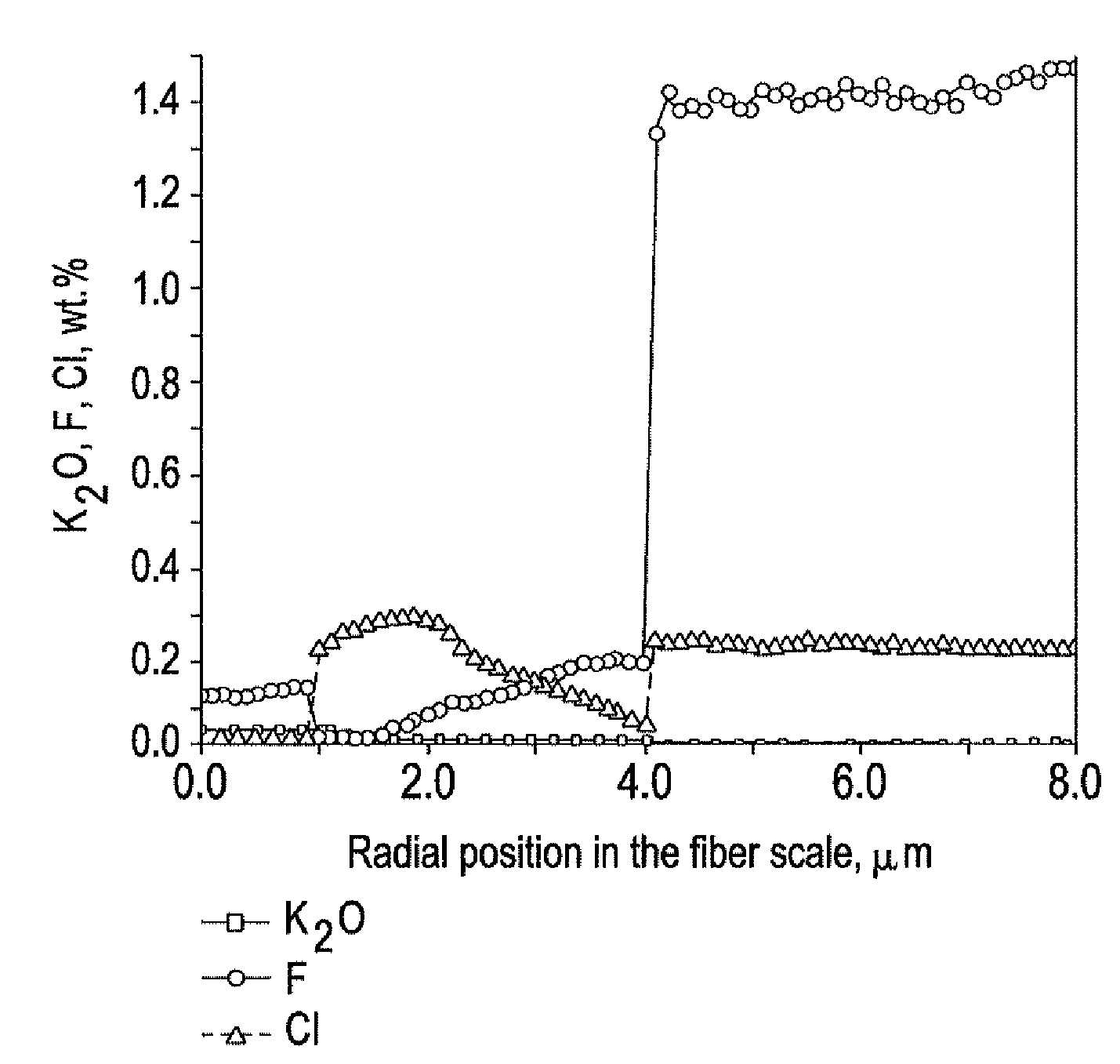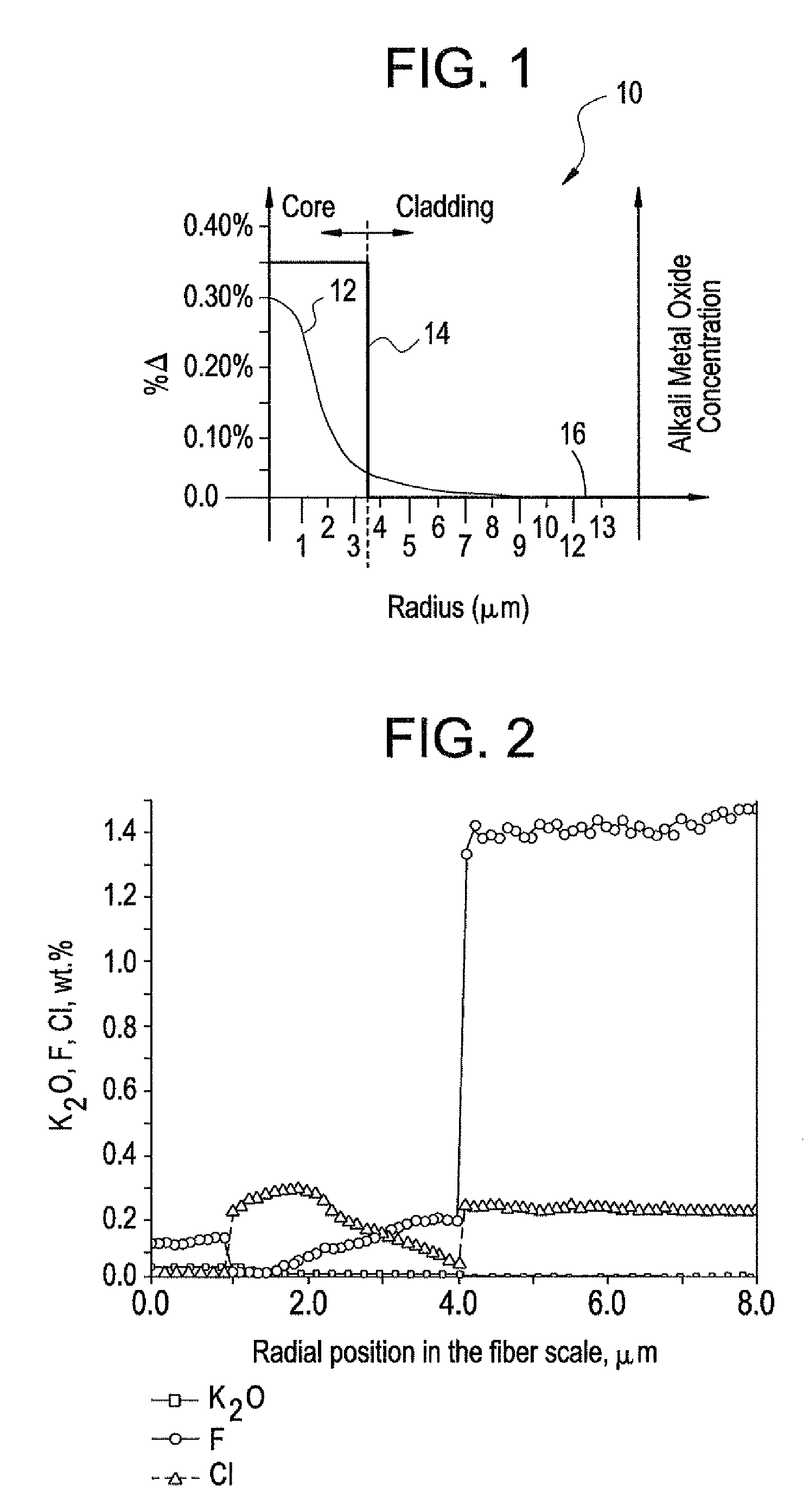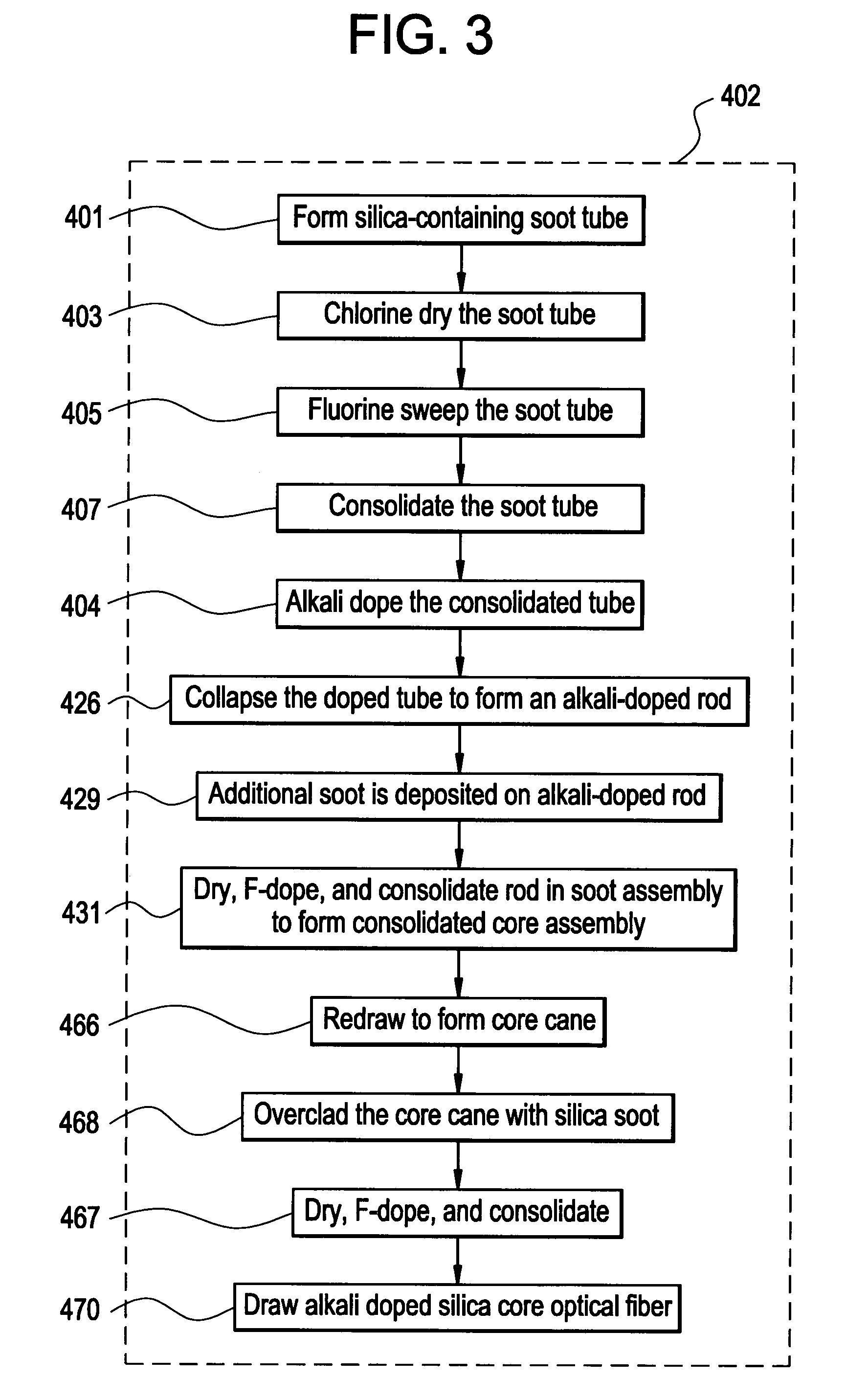Optical fiber containing alkali metal oxide
a technology of optical fiber and alkali metal oxide, which is applied in the direction of cladding optical fiber, manufacturing tools, instruments, etc., can solve the problems of amplifiers resembling a significant system cost, and the principal limitation attribute of optical fiber attenuation
- Summary
- Abstract
- Description
- Claims
- Application Information
AI Technical Summary
Benefits of technology
Problems solved by technology
Method used
Image
Examples
Embodiment Construction
[0021]The present invention relates to a low loss optical fiber and methods for making the same. More specifically, the invention relates to an optical fiber doped with an alkali metal oxide dopant and methods for manufacturing the optical fiber and associated preforms. The following terms as used herein have the following meanings:[0022]The mode field diameter is a measure of optical power across the endface of a single-mode optical fiber, and is expressed as:
2ω0=(λ / π)[2∫I(Φ) sin Φ cos ΦdΦ) / ∫I(Φ) sin3 Φ cos ΦdΦ]1 / 2 (1)
where 2ω0 is the mode field diameter (and therefore ω0 is the mode field radius), λ is the mean wavelength of the light, Φ is the angle with respect to the center of the radiation pattern, and the integrations are preferably carried out from 0° to 90°. Mode field diameter may be measured, for example, according to test procedure ANSI / TIA / EIA-455-191-A-2001.[0023]Effective area is
Aeff=2π(∫E2r dr)2 / (∫E4 r dr) (2)
where the integration limits are 0 to ∞, and E is the el...
PUM
| Property | Measurement | Unit |
|---|---|---|
| outer radius | aaaaa | aaaaa |
| refractive index | aaaaa | aaaaa |
| zero dispersion wavelength | aaaaa | aaaaa |
Abstract
Description
Claims
Application Information
 Login to View More
Login to View More - R&D
- Intellectual Property
- Life Sciences
- Materials
- Tech Scout
- Unparalleled Data Quality
- Higher Quality Content
- 60% Fewer Hallucinations
Browse by: Latest US Patents, China's latest patents, Technical Efficacy Thesaurus, Application Domain, Technology Topic, Popular Technical Reports.
© 2025 PatSnap. All rights reserved.Legal|Privacy policy|Modern Slavery Act Transparency Statement|Sitemap|About US| Contact US: help@patsnap.com



